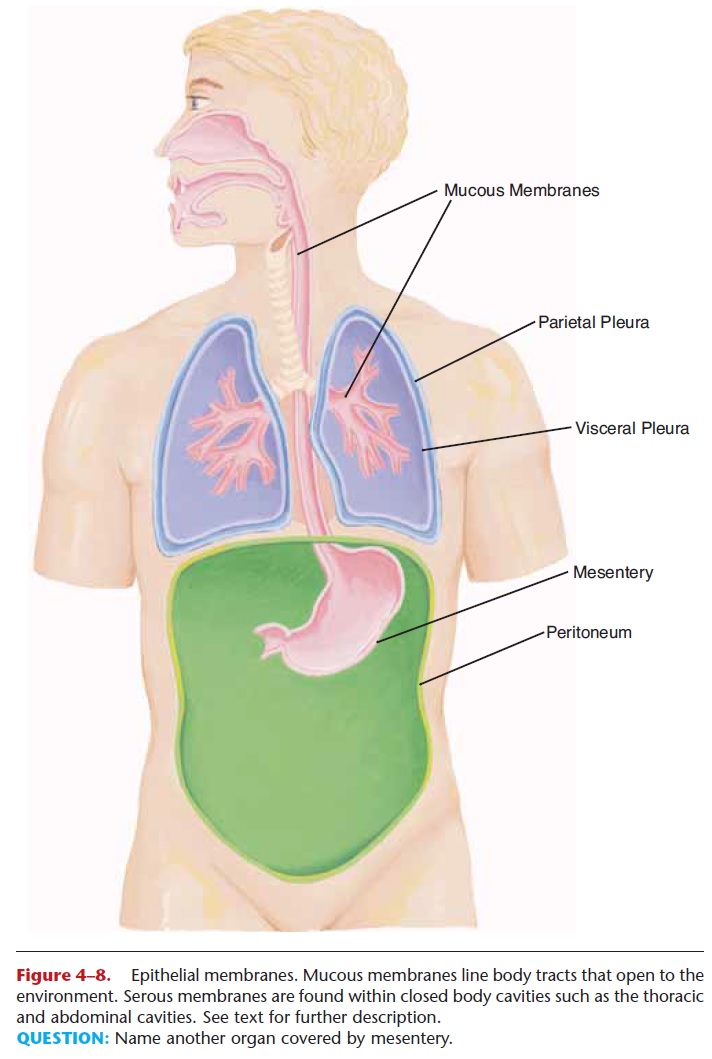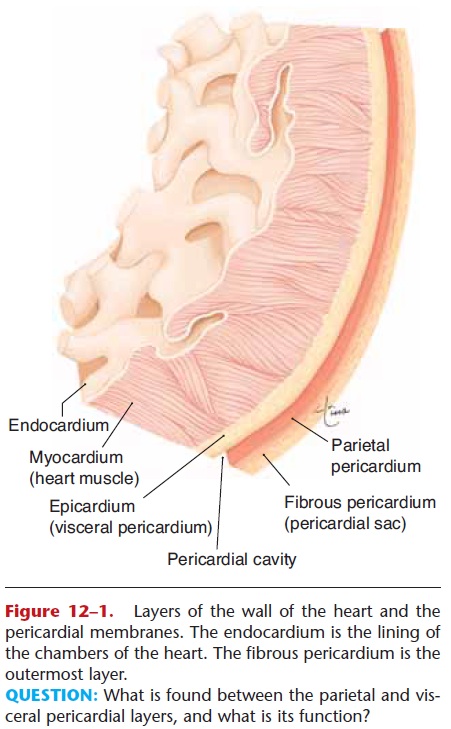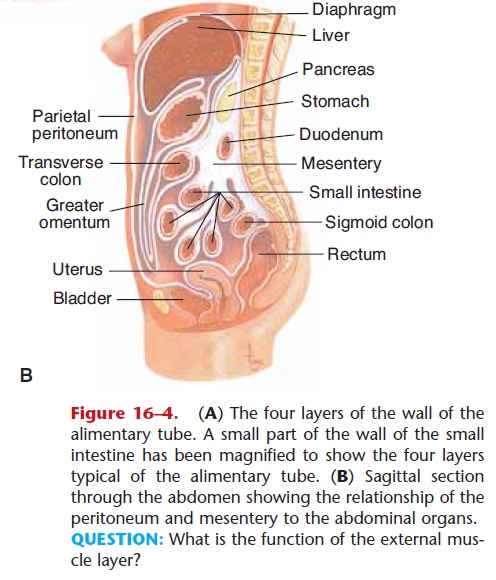Chapter: Essentials of Anatomy and Physiology: Tissues and Membranes
Membranes: Epithelial and Connective, serous and mucous Membranes
MEMBRANES
Membranes are sheets of tissue that cover or line sur-faces or that separate organs or parts (lobes) of organs from one another. Many membranes produce secre tions that have specific functions. The two major cat-egories of membranes are epithelial membranes and connective tissue membranes.
EPITHELIAL MEMBRANES
There are two types of epithelial membranes, serous and mucous. Each type is found in specific locations within the body and secretes a fluid. These fluids are called serous fluid and mucus.
Serous Membranes
Serous membranes are sheets of simple squamous epithelium that line some closed body cavities and cover the organs in these cavities (Fig. 4–8). The pleural membranes are the serous membranes of the thoracic cavity. The parietal pleura lines the chest wall and the visceral pleura covers the lungs. (Notice that line means “on the inside” and cover means “on the outside.” These terms cannot be used interchangeably, because each indicates a different location.) The pleu-ral membranes secrete serous fluid, which prevents friction between them as the lungs expand and recoil during breathing.

Figure 4–8. Epithelial membranes. Mucous membranes line body tracts that open to the environment. Serous membranes are found within closed body cavities such as the thoracic and abdominal cavities. See text for further description.
QUESTION: Name another organ covered by mesentery.
The heart, in the thoracic cavity between the lungs, has its own set of serous membranes. The parietal pericardium lines the fibrous pericardium (a connec-tive tissue membrane), and the visceral pericardium, or epicardium, is on the surface of the heart muscle (see also Fig. 12–1). Serous fluid is produced to pre-vent friction as the heart beats.

In the abdominal cavity, the peritoneum is the serous membrane that lines the cavity. The mesen-tery, or visceral peritoneum, is folded over and covers the abdominal organs. Here, the serous fluid prevents friction as the stomach and intestines contract and slide against other organs (see also Fig. 16–4).


Mucous Membranes
Mucous membranes line the body tracts (systems) that have openings to the environment. These are the respiratory, digestive, urinary, and reproductive tracts. The epithelium of a mucous membrane (mucosa) varies with the different organs involved. The mucosa of the esophagus and of the vagina is stratified squa-mous epithelium; the mucosa of the trachea is ciliated epithelium; the mucosa of the stomach is columnar epithelium.
The mucus secreted by these membranes keeps the lining epithelial cells wet. Remember that these are living cells, and if they dry out, they will die. In the digestive tract, mucus also lubricates the surface to permit the smooth passage of food. In the respiratory tract the mucus traps dust and bacteria, which are then swept to the pharynx by ciliated epithelium
CONNECTIVE TISSUE MEMBRANES
Many membranes are made of connective tissue. Because these will be covered with the organ systems of which they are a part, their locations and functions are summarized in Table 4–5.

Related Topics